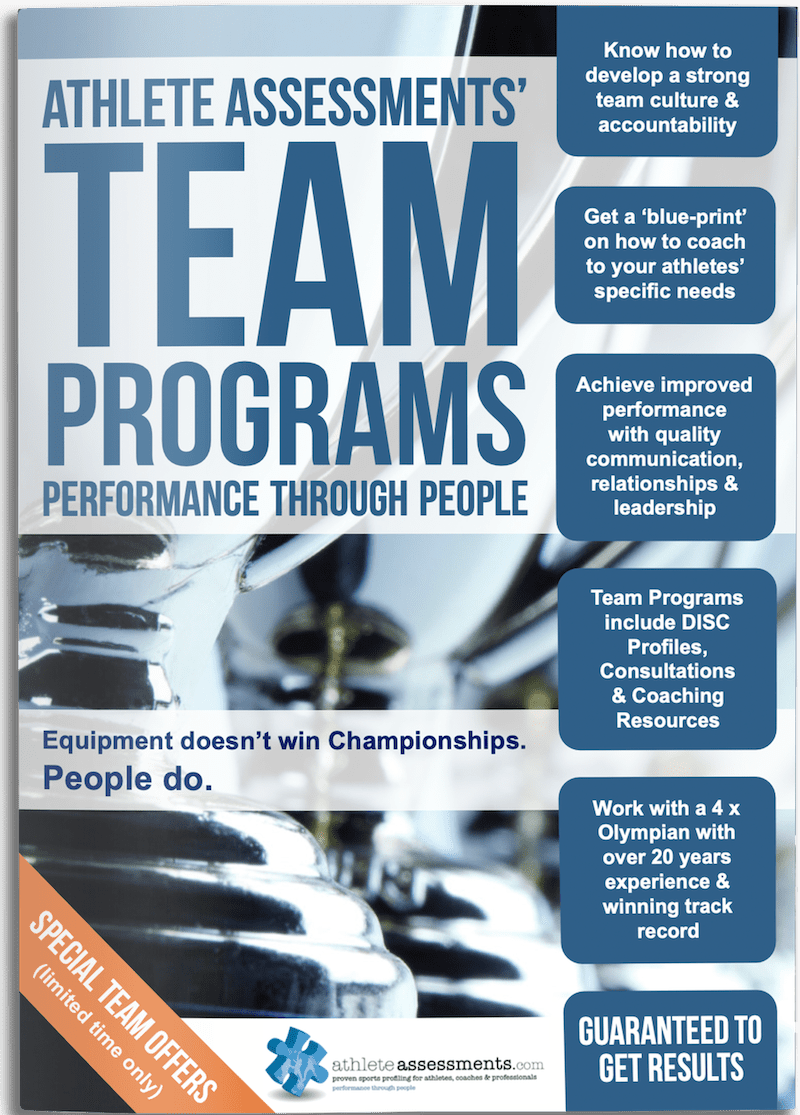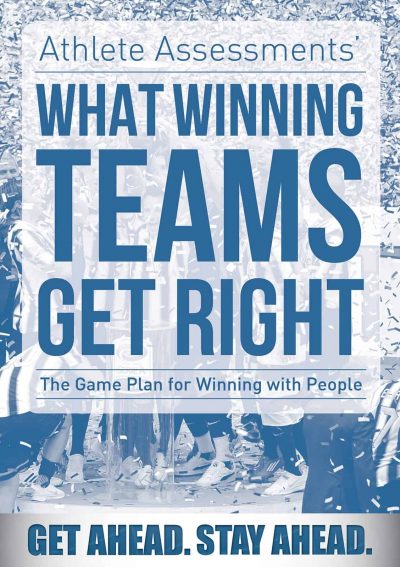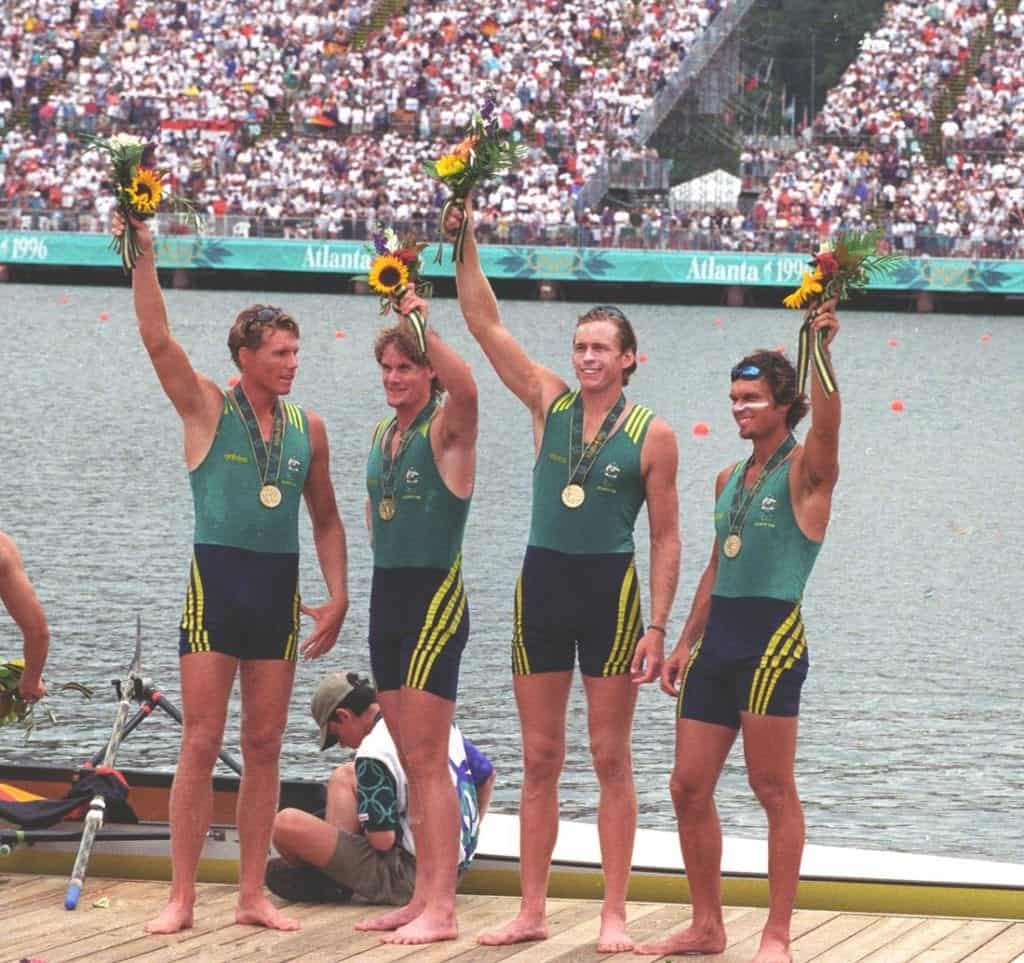The best teams know their one element… do you?
With Athlete Assessments we have now worked with over 22,000 individuals from over 40 different sports. This work has given me a unique vantage point to see the recurring patterns or themes that create success. When I see these patterns consistently creating success, year after year, the evidence certainly mounts. With this in mind, here is one of those concepts I have seen create consistent success. I believe it is critical for any coach and all teams to clearly understand and apply this concept to improve performance.
Coaches, teams and individuals who enjoy sustained success attribute their success to ONE critical technical and ONE critical non-technical element.
What I mean by this ONE element concept, is when they are asked to describe and talk about what specifically has enabled them to achieve what they achieve, they can boil down and sift through the many elements they do well, to get to the one key technical and one key non technical element.
What is ONE Technical Element?
An example of a technical element is the ability to retain possession due to a refined passing game for a winning soccer (football) team. This ability gives the team a winning edge, if they can do it better than any other team in their competition.
Another example of a critical technical element which can make all the difference is defense. If we look at the 2015 Champion USA Women’s World Cup Soccer team, their defense was the ONE technical element they did better than any other team. Heading into the final, they had conceded just one goal and tied the defensive record with a shutout streak of 540 minutes of World Cup play. Defense wins games (in most ball sports), but it only wins games if your team’s defense is far superior to the opposition team’s defense. The USA team had superior defense during the World Cup and this is ONE element which allowed them to create winning outcomes.
The famous 1990 Loyola Marymount basketball team which went to the Elite 8 despite massive adversity is another example. When you look at what technically defined this team, there was ONE technical element their opposition could not match. Their record as the highest scoring team in NCAA D1 history (averaging 122 points per game) was only just broken. Offensively they could convert more shots than anyone else. But why? Was it because they were more accurate? Or did they just create more scoring opportunities? From my perspective, their ONE technical element was their speed of play. Few teams could keep up with them and their speed of passing and ball movement.
How to choose your ONE Technical Element
A technical element to focus on and exploit has to be one which results in winning games. This may sound obvious, but often team’s and individuals and even entire businesses focus on the wrong element.
An Example from AFL (Australia Rules Football)
In AFL, it was believed a winning team would be the team who could win the ball in center clearances, stoppages and breakdowns in play. A famous Grand Final was played out where a team won not just these statistical areas, but almost all statistical measures and still lost. They even had more shots on goal (scoring opportunities) than their opposition yet they lost because ultimately in AFL, nothing beats kicking accuracy. The fact the losing team had more shots at goal but could not convert them into points ultimately cost them the game. The winning team was simply more accurate. If I was coaching an AFL team, kicking accuracy would underpin every aspect of my game strategy as it is a core element of the game upon which every other aspect of the game depends. It is no use winning the ball in various parts of the game, only to lose it immediately after through poor kicking accuracy.
Choosing an element to focus on is the first step, but you have to ensure it is a core element contributing to success in your sport. Then you work to ensure your team do this better than any other team in your competition.
Being superior in this ONE critical element should be a big part of your team’s identity. This is vital as what this relates to is building your team around this ONE element. This means recruiting for players who are skilled in their element and are willing to build a game around it. The players must be mentally, physically and emotionally committed and capable of executing and performing this ONE element better than any other team. When you stick with this commitment to ONE element over a sustained period of time, this element becomes your key to success. Far too often I speak with teams that vary their ONE element from one season to the next (they often call it their focus). This variation impacts recruitment, selection, training methodologies and culture as it creates instability in all things which are most critical to a team. Coaches often change their ONE element because they think if it did not create success in that season they need to do something different, but building on the ONE element which will suit your team will create sustained success.
ONE Non-Technical Element
The other aspect to the ONE element concept, is the importance of the non-technical element. In the same concept as the technical, the coach, players and team can define with total clarity, the ONE non-technical element which rewards them with success. Non-technical elements include the core value which delivers the team’s identity. For example, belief or trust or honesty are all critical core values a team may hold. When you ask successful teams about non-technical elements, they always define just one core value. It could be belief. Above all else, this team believes in itself and each other.
Whatever the non-technical element is, there has to be total commitment to it and it must be an element which contributes to winning games and also supports the technical one element. For example a soccer team whose one element is defense would do well to focus on trust or belief. It is not possible to defend well if you do not trust your fellow team members to do their job. Feeling you have to do someone else’s job opens up gaps in a defensive structures and ultimately limits effectiveness. A team I once worked with said their non-technical element was how they all liked each other. While this was a critical element to them, it would not contribute to winning games the way trust in each other would. The chosen non-technical element has to relate to what it takes to be successful in sport.
An Example from Business
A study of the most successful General Managers and CEOs, where it was found that above all other non-technical abilities or characteristics, the ONE element which shone through was Energy Stamina. The ability to passionately work extreme hours week in, week out, year after year ultimately defined their collective success. The next big element in these leaders was Focus, or their ability to pursue with total dedication a singular goal and push distractions to the side. Great sports people are similar in these two qualities. In fact, I challenge you to find a successful person who did not embody these qualities.
Defining what your technical and non-technical elements are is vital. Athletes are already significantly distracted today, more so than ever. By focusing on the ONE element concept you can bring a team together faster, keep them together longer, and your program can benefit over many years.
We have worked with hundreds of teams across 41 different sports. The most successful teams talk about the ONE element they do best, their ONE element of focus, even if they do not define it in those terms. When you talk to successful coaches, teams and athletes they know what the core element of their technical and non-technical success is. For teams whose season is played out predominately in the media, you even can hear it in the consistent language they use in their press conferences. When you ask different athletes in the team about the ONE Element they focus on, they will respond in a consistent manner. They know what is most important to the team, because it has been reinforced to them through every aspect of their team experience from recruitment, selection and coach interactions.
The opposite is also true. Teams struggling for any success or have only fleeting success can never unanimously agree on the ONE Element that defines their team. Each coach and athlete has a different perspective. When the team is under pressure in a competitive environment, they will pull themselves in different directions. They will pull in the direction of their own unique ONE element rather than the collective ONE Element.
How to Test for Your Team’s ONE Element
There is a simple test you can do with your team or or individual athlete to discover if there is clarity on the One Element concept. Ask your athletes individually and collate what they say. If there is significant disparity in answers, then there is obviously confusion over who they are as a team. You know they will be heading in different directions when they compete.
Competing against your Opposition’s ONE Element
Your team’s opposition, if they are good, will have a One Element concept which applies to them. So how do you compete against them? Here’s an example from my own career.
I vividly remember racing the 2000 Olympic Men’s Four from Great Britain, containing the two of the greatest athletes the strength endurance world has ever seen in Mathew Pinsent and Sir Steven Redgrave. Sir Steven won his 5th Olympic Gold Medal when I raced him in 2000 and my crew finished with the Bronze. I recall our conversations about how we could beat his team. His crew always raced from in front (took the lead early and maintained it). When my crew raced in Australia, we also raced from in front. We liked to hit the lead almost immediately and stay there. When we raced the British crew, we could never match their speed off the line, but we tried.
We tried to beat them at their ONE Element, what they did better than anyone else. I am not saying we should have done something different either. Sometimes you have to try everything in order to find a chink in the opposition’s armor. Unfortunately, some teams have no chink. They have no obvious, exploitable weakness. That is why they are so good.
At that time our ONE Element was that we were more efficient than any other crew. I do sometimes wonder if we had stuck to our ONE element, if we would have won the Silver Medal. In fact I am sure we could have, as we had beaten the Italian crew several times before. Instead we tried to match the British from the start at their own ONE Element. In doing so, we used more fuel than normal and set up a rhythm which was not as efficient as it could have been. In the end, it is the difference of 0.29%. Not much but enough to decide who wins gold or bronze.
The key here is to understand that you cannot compete on the same ONE element as your opposition, if they are the best in the world at it. You have to compete on your terms and focus on your ONE key element.
However at some point your ONE key element may be the same as your opposition’s ONE key element. That will be a tough day. Essentially you have two choices, you can try to beat them at that ONE Element, or you can try to adapt. The risk in adaption is that you will not be playing to your strengths. Either way, it is critical to have total commitment from every person involved with the team to ensure all are satisfied to take whatever action the team feels is best for them and to be able to live with the results.
Summing Up
This article outlines a core philosophy of teams, athletes, coaches and business people who find sustained success – however they choose to define it. I encourage you to talk to your team and coaches to seek what your ONE key technical and ONE key non-technical elements are. This way you can evaluate if you are on the same page, and if executing this element in a way that will create success. If you feel you are on the same page and have defined your key technical and non-technical elements, then you may decide you simply have to get even better at these elements and as such focus your energy into these areas.
At Athlete Assessments, we’re here to provide you with excellence in service and to help you be your best. If there is anything we can assist you with, please contact us






